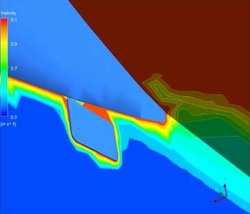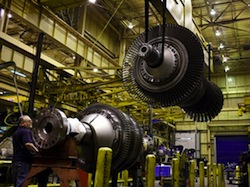Digital Manufacturing: Economic Windfall
 DM-Report’s sister publication, HPC In The Cloud, reported on March 5 that cloud computing is on track to create approximately 14 million jobs globally from 2011 – 2015. And digital manufacturing is not exempt from this prosperity! At least that is the story being told. But is it true?
DM-Report’s sister publication, HPC In The Cloud, reported on March 5 that cloud computing is on track to create approximately 14 million jobs globally from 2011 – 2015. And digital manufacturing is not exempt from this prosperity! At least that is the story being told. But is it true?
To be honest, the mathematics of job creation is a highly nonlinear and convoluted ecosystem of job multipliers that range from next to nothing to the totally absurd, coupled with assumptions regarding the impact of dramatically increased innovation. The results can garner both overly optimistic and overly pessimistic reviews. For instance, discussions of the above articles have already been reviewed and editorialized in this Information Week article as overly optimistic to downright unrealistic. Does that invalidate the original report?
Regardless of your opinion on this topic, what is undeniable is the immense job creating potential of more broadly leveraging virtual tools (both publically and privately) across our country. We can argue the number of trees, but not the existence of the forest. The adoption of digital manufacturing tools such as modeling and simulation will increase the competitiveness and diversification of U.S. manufacturers, creating a plethora of direct and indirect quality, high paying jobs.
Digital manufacturing centers including software, infrastructure and knowledge such as NCMS’ proposed PICs (Predictive Information Centers) will also attract out-of-state manufacturers to the areas in which they are located, bringing economic benefits to the region.
When factoring job creation in the realm of digital manufacturing, NCMS has turned to its member companies for real life data and in-depth reports.
For example, last summer we wrote a piece in which we referenced the seemingly unrealistic results at my former employer – L&L Products. An NCMS member and user of digital manufacturing tools such as modeling & simulation, L&L Products made the risky and costly decision to invest in the hardware, software and people it needed to adopt modeling & simulation – and it paid off, in spades. L&L Products doubled the size of their company and their sales in the 10-years since they adopted M&S.
Now, let’s look at these numbers. There are nearly 300,000 small and medium sized manufacturers (like L&L Products) in the United States. The average manufacturer in our nation employs 40 people, but less than 25% of them adopt digital manufacturing tools into their product development/manufacturing process.
So that’s approximately 75,000 small & medium sized manufacturers in the U.S. using modeling & simulation.
At 40 employees each, that’s a total of 3 million employees.
Now, L&L Products doubled their employment over the past 10 years, so let’s say that by 2022, an additional 3 million people are employed by these companies. That seems overly optimistic even to me. So let’s be very conservative and drop the growth at these manufactures from 100% to only 10%. That would mean each manufacture, on average would hire 4 employees. That still equates to an additional 300,000 jobs.
Are you still with me?
That’s just DIRECT, QUALITY, HIGH-PAYING advanced manufacturing jobs. We haven’t even gotten to indirect job creation yet.
The multiplier used traditionally when calculating indirect jobs as the result of direct manufacturing jobs is 1.5 – which brings us to 450,000 indirect jobs in addition to the 300,000 newly created, direct jobs.
So if you’re doing the math – we’re now at 750,000 new jobs created.
But wait, there’s more
A study by NCMS member company Rockwell Automation and confirmed by others, has found that using 1.5 as the multiplier for indirect jobs falls far short when it comes to advanced manufacturing. The study found that using a multiplier of 5 or even 6 is much closer to accurate data.
So we’ll take the low end, let’s say that 300,000 direct jobs x 5 = 1,500,000 indirect jobs.
A total of 1,800,000 new jobs in the next 10 years!
That seems very realistic to me. In fact, maybe a bit too conservative.
If we had maintained the 100% growth we would have estimated 18,000,000 jobs over ten years, which while is believable to some, but may cause others some credibility concerns. The real truth is probably somewhere in between, as it always is.
Regardless, creating between 1,800,000 and 18,000,000 quality jobs over the next 10 years sure seems like a no-brainer to me.
And remember, we started with a base of 25% of the SMMs in the United States adopting digital manufacturing and a very conservative growth estimate.
 Imagine if we could reach more than 25%; imagine if there was a center that allowed people interested in adopting these game-changing tools to go and share the risk and cost? To have access to the knowledge, infrastructure and software they need to make this affordable to them? On a per use basis?
Imagine if we could reach more than 25%; imagine if there was a center that allowed people interested in adopting these game-changing tools to go and share the risk and cost? To have access to the knowledge, infrastructure and software they need to make this affordable to them? On a per use basis?
Imagine what that would do to our National economy, to your state, your town? Imagine if we were all back to work, and this great nation was innovating again.
Digital manufacturing can lead the way.










